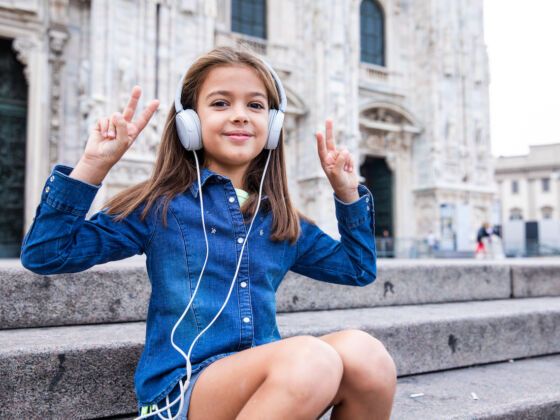MY THREE KIDS HAVE no lack of wilderness in their lives. The Andes of Argentine Patagonia is their playground, it’s their backyard. For my 11- and 14-year-old kids, days are spent snorkeling transparent waters to spot massive rainbow trout, whitewater rafting the Rio Azul or Manso, crossing over to Chile by foot, backcountry skiing, or horseback riding through wildflower fields. Our town does not have a shopping mall, a cinema, bowling, an arcade, or anything of the sort. Even my more ‘cosmopolitan’ 15-year-old daughter longboards 25 km to a lake to go cliff-jumping, because that’s what teenagers do here to pass the time.


Why Adventure Travel With Kids Does Not Always Have to Mean Heading Into the Wilderness
So adventure travel in the traditional sense doesn’t do much to push them. Jump off the 25-foot waterfall? Sure, no problem, race you there. Ziplining? They find it utterly boring. Rock climbing? All over it.
I’ve always thought that adventure travel is about getting out of one’s comfort zone to feel more alive and to see how capable you really are when pushed. For me, it’s usually been confronting nature head on in some way. But living in Patagonia, I have had to redefine my notion of adventure travel. Maybe adventuring just means exploring an environment that’s unknown to you. For my kiddos, it can mean heading into the urban craziness that is Buenos Aires.
The cool thing about country kids visiting a big city is that it’s easy to start a conversation about the relationship between humans and nature, about what man can create and what man can destroy.
I remember the first time we spent time in Buenos Aires after having lived in Patagonia for a while. Everything about that trip was new to them. They couldn’t wrap their heads around the fact that people lived without seeing the stars at night. That unless you had a penthouse 30 floors up, sunsets and sunrises were not a given. That the noise did not stop, and that locals didn’t even seem to notice the never-ending blast of sirens, horns, music, animated conversation. That people locked their doors.
My typically very confident children were tense as we went down into the subway the first time, found the large map, and I gave them an address of where we were heading and told them to figure it out. I said I would be patient, I would be with them every step of the way, but I would offer no help. My son (who draws intricate topographical maps before a hike) looked stunned and confused at the red, blue and green criss-crossing subway lines. The way their eyes lit up when we finally reached our destination rivaled the feeling of elation after crushing through class 5 rapids.
These are kids who bake bread over fire using stoneground wheat that they helped plant. But a Frappuccino (with whipped cream, straight from an actual Starbucks, while using functioning wifi!) was at least 10 times more exciting and exotic.
The kids are not phased by trekking 10km through forest at times to get to where they need to go. They hitchhike the 30 km down into town. Yet when they wanted to make lunch and I asked them to go pick up some food at the market two blocks away, they hesitated. They went, not very comfortable with the idea. But when they walked back through the door, bag in hand, they walked a little taller. Those two blocks, simply crossing major streets and dealing with traffic, were an adrenaline-filled adventure for them.
And once back home, they could fully appreciate every silent, starry night, every sunset dipping down under the Andes, and have better awareness that these are luxuries that not every kid gets to grow up experiencing. And while traditional adventure travel is an everyday part of their life, they have learned to see adventure in all of their surroundings, whether they are in the middle of the city or deep in nature.